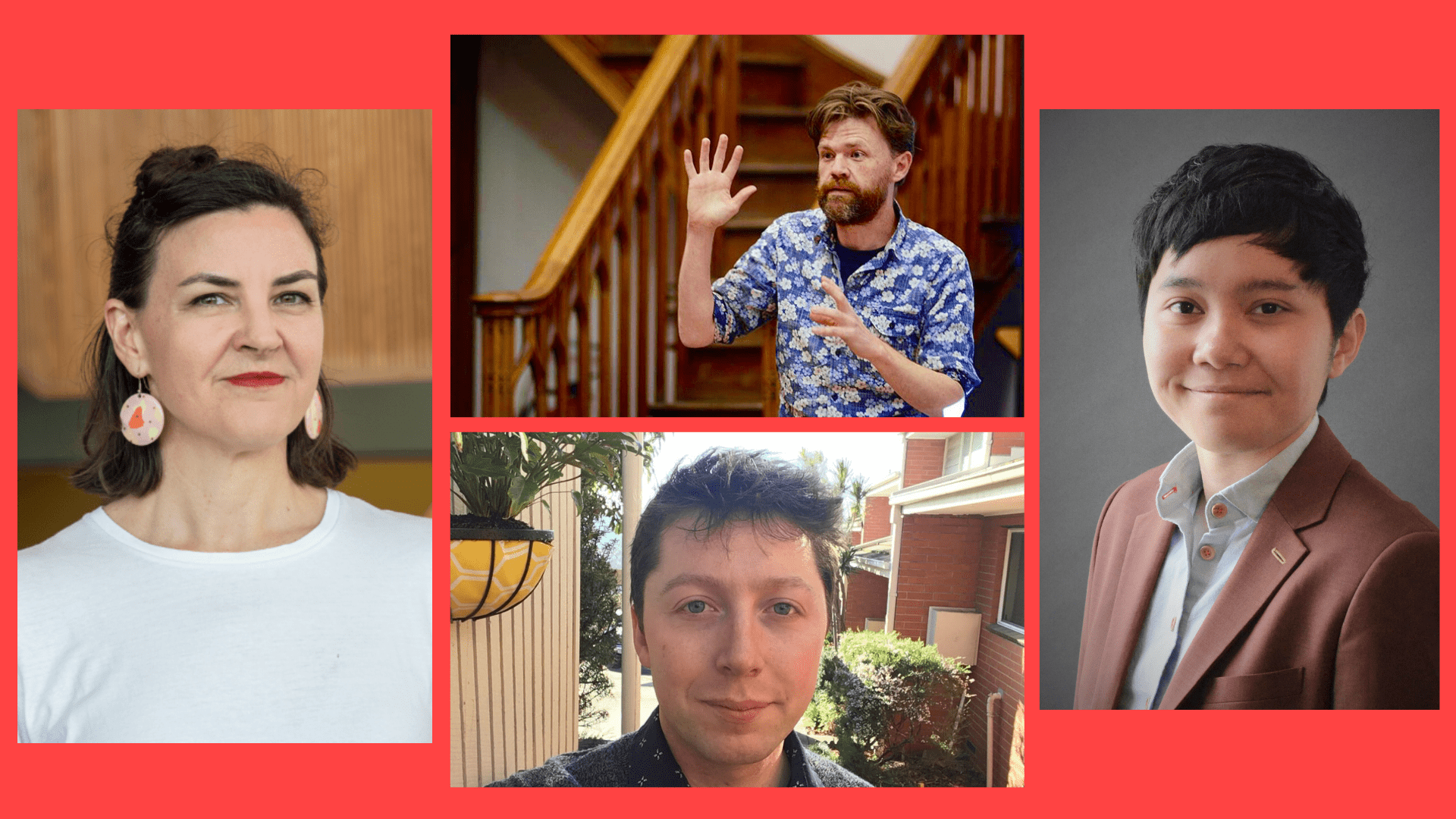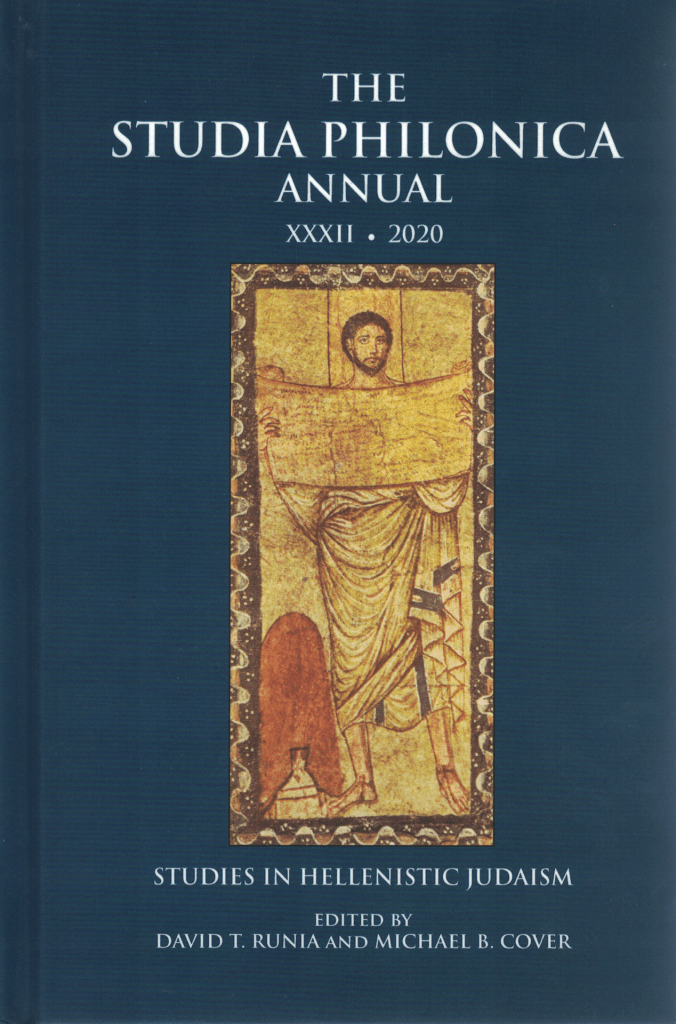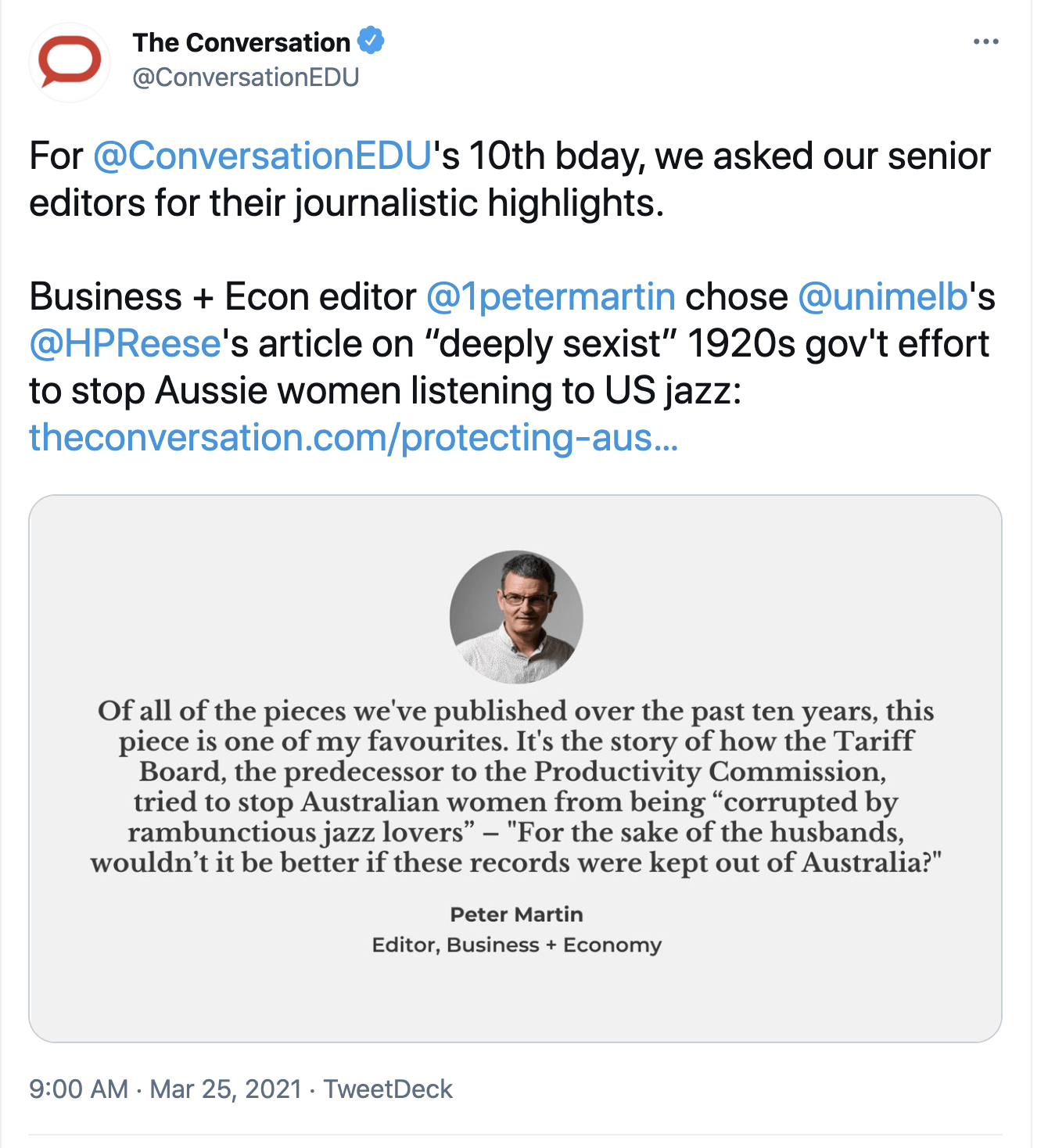
SHAPS Digest (March 2021)
A monthly roundup of media commentary, publications and projects, and other news from across the School community.
Oleg Beyda (Hansen Chair Support, History) published an article (in Russian) reviewing the award-winning Hungarian film Natural Light (dir. Dénes Nagy, 2021), set on the Eastern Front of the Second World War in 1943. The film has generated controversy in Hungary over its representation of atrocities carried out by the Hungarian army.
Liam Byrne (Honorary, History) presented a talk at the Parliamentary Library, ‘Becoming John Curtin and James Scullin: Their Early Political Careers‘ (video via the link). Before becoming prime ministers, John Curtin and James Scullin were two young working-class men who dreamt of changing their country. Liam Byrne, author of Becoming John Curtin and James Scullin, discusses their intertwined early lives and the role each man played in the Australian Labor Party’s first experience of national government, the great conscription clash and party split of 1916.
Archaeologist Tonia Eckfeld (Honorary Principal Fellow, Grimwade Centre) discussed her research on the Terracotta Army on ABC Radio Hobart.
Mark Edele (Hansen Chair in History) was interviewed on ‘How World War 2 Nations Mobilised Their Economies for War‘ Timeline – World History Documentaries (from 13:17 in the clip via the link).
Matt Galway (former Hansen Lecturer in Asian History) and Craig Smith (Asia Institute) discussed the political use of the concepts of traitors and treason in China, for the Asia Institute’s Ear to Asia podcast.
Dan Halliday (Philosophy) co-authored an article, ‘How Many Vaccine Doses Can Nations Ethically Hoard? The Case for Sharing Supplies Prior to Reaching Herd Immunity’, in Foreign Affairs. The article addresses the ethical question: How many vaccine doses are countries permitted to secure for the purpose of immunising their own residents before they are obligated to relinquish doses to other countries? The authors propose a new framework to answer this question, whereby a flu-risk standard is used for determining when governments have the obligation to share vaccine doses.
Mike Jones (PhD in History 2019, now Postdoctoral Research Fellow in the School of History, ANU, on the Kathleen Fitzpatrick Laureate Program, Rediscovering the Deep Human Past) delivered a keynote address, ‘Politics, Pandemics, and Postdisciplinary GLAM: Relationalities All the Way Down’, at GLAMSLAM21, held by the Australian Centre for Public History at UTS, Sydney.
Catherine Kovesi (History) published a blogpost for the Australasian Centre for Italian Studies (ACIS) to mark the 1600th anniversary of the founding of the city of Venice. Catherine Kovesi serves as Chair of the Management Committee of the ACIS, whose core mission is the promotion of teaching and research in the field of Italian Studies throughout Australasia.
The latest episode of the My Marvellous Melbourne podcast, produced by Melbourne History Workshop under the direction of Andrew May (History), features our former PhD student Sue Silberberg speaking about her book, A Networked Community: Jewish Melbourne in the Nineteenth Century (Melbourne University Press).
Una McIlvenna was interviewed for ABC Nightlife on the execution of Archbishop Thomas Cranmer, on This Day in History.
Dani Scrimshaw (Honours in History, 2019) published an article, ‘Heteronormativity and Popular History‘ in Archer Magazine, reflecting on her experience of researching and writing her Honours thesis and on the need for a queer history movement in Australia.
Mary Sheehan (PhD candidate, History) was interviewed by Perth Now about her work on the history of the Spanish influenza pandemic in Australia. As a new COVID-19 vaccination centre was opened at Melbourne’s Royal Exhibition Building, Mary looked back on the history of the building use as a hospital during the 1919 pandemic.
Darius von Güttner (Honorary Principal Fellow, History) (@guttnerus) discussed the history of communications on ABC Radio Shepparton (from around 1:10:30 via the link).
The work of Sam Watts (PhD candidate, History) was featured on the cover of Australian Book Review. The editorial for the issue noted that “Highlights include young Melbourne historian Samuel Watts’s shocked response to the storming of the US Capitol on January 6, to which he brings a needed historical perspective, reminding us that this was not the first time that racists and insurrectionists sought to disrupt the democratic process”.
Academic Publications:
Mike Arnold (HPS) co-authored with Hannah Gould, Tony Dupleix and Tamara Kohn a journal article, “‘Stood to Rest’: Reorientating Necrogeographies for the 21st Century”, in the journal Mortality.
Human bodies are typically buried underground, horizontally ‘in repose’. To the extent that this orientation has become the standard; it is a non-choice that is under-interrogated by scholars. In this paper, we discuss innovations which allow for the vertical orientation of the body within the earth and for the vertical stacking of remains above the earth in high-rise structures. Both of these boundary-pushing forms of disposition address imminent shortages in the land allocated for cemeteries in the context of intense urbanisation and a peaking death rate. They also promise to transform the necrogeography of contemporary cities and intimate relations between the living and the dead. This paper is a collaboration between the DeathTech Research Team and the Managing Director of Upright Burials, where the dead are ‘stood to rest’ in shaft graves. The pragmatic advantages of vertical burial are easily explicated, but in this paper, we focus on the cultural and symbolic dimensions of this largely unfamiliar spatial relation and the challenges of ‘reorienting’ the public towards this new form of disposition.
Mike Jones (PhD in History, 2019; now postdoctoral fellow ANU) (@mikejonesphd) published a book, Artefacts, Archives and Documentation in the Relational Museum (Routledge, 2021).
 Artefacts, Archives, and Documentation in the Relational Museum provides the first interdisciplinary study of the digital documentation of artefacts and archives in contemporary museums, while also exploring the implications of polyphonic, relational thinking on collections documentation.
Artefacts, Archives, and Documentation in the Relational Museum provides the first interdisciplinary study of the digital documentation of artefacts and archives in contemporary museums, while also exploring the implications of polyphonic, relational thinking on collections documentation.
Drawing on case studies from Australia, the United Kingdom, and the US, the book provides a critical examination of the history of collections management and documentation since the introduction of computers to museums in the 1960s, demonstrating how technology has contributed to the disconnection of distributed collections knowledge. Jones also highlights how separate documentation systems have developed, managed by distinct, increasingly professionalised staff, impacting our ability to understand and use what we find in museums and their ever-expanding online collections. Exploring this legacy allows us to rethink current practice, focusing less on individual objects and more on the rich stories and interconnected resources that lie at the heart of the contemporary, plural, participatory ‘relational museum’.
Una McIlvenna (Hansen Senior Lecturer, History) (@UnaMcIlvenna) published an article, ‘Singing Complaintes Criminelles across Europe / Les complaintes criminelles en Europe‘, Criminocorpus:
The complainte, a song about crime and punishment, is not simply a French phenomenon, but has been found all over Europe since the early modern period. This article compares the French complaintes of 1870-1940 with their counterparts in English, Italian, German and Dutch to reveal European similarities as well as regional differences. Beginning with a brief discussion of the term ‘complaint’ and its usage in the early modern era, we move into the nineteenth century. Everywhere we find that murder remains the most common subject, but that the numbers of victims are usually much higher in German songs. We find that there are variations in the use of melodies, and that the Italian songs do not use the tradition of contrafactum. The biggest difference is in the printing technologies: the size of the sheets or booklets varies a lot from region to region, and the use of images has seen great changes since the early modern era.
Una McIlvenna (Hansen Senior Lecturer in History) and Jenny Spinks (Hansen Associate Professor in History) co-authored an article with Kat Ellinghaus, Beth Marsden and Fiona Moore, ‘Object–Based Learning and History Teaching: The Role of Emotion and Empathy in Engaging Students with the Past‘ in History Australia:
In 2017 and 2018 historians teaching at the University of Melbourne, in collaboration with staff from the University of Melbourne’s Cultural Collections, brought an element of object-based learning to their undergraduate teaching. This article describes their pedagogical strategies in bringing material culture to a study of the past, discusses the advantages to this kind of teaching, and describes the results of a survey of students which aimed to measure student engagement and skills gained. We argue that object-based learning is an adaptable pedagogy that allows students to feel confident in reading a variety of historical sources, extrapolate about the experiences and emotions of people in the past and to think deeply about the politicised ways in which societies commemorate, memorialise and archive the past.
The genesis of the research and teaching on which this article was based was the 2016 Hansen Gift to the Arts Faculty at the University of Melbourne to transform the teaching of history by fostering innovation in teaching.
Dang Nguyen (PhD candidate, HPS) (@digitaldang) published an article, ‘Can’t Wait to Feel Better: Facebook and the Recalibration of Downtime in Tending to the Body‘, in the journal Media, Culture and Society:
This article explores the temporality of liveness on Facebook Live through the analytical lens of downtime. Downtime is conceptualised here as multiscale: downtime exists in between the micro action and inaction of everyday life, but also in larger episodes of personal and health crises that reorient the body toward technologies for instantaneous replenishment of meaning and activity. Living through downtime with mobile technology enables the experience of oscillation between liveness as simultaneity and liveness as instantaneity. By juxtaposing time-as-algorithmic against time-as-lived through the livestreaming practices of diện chẩn, an emergent unregulated therapeutic method, I show how different enactments of liveness on Facebook Live recalibrate downtime so that the body can reconfigure its being-in-time. The temporal reverberation of downtime and liveness creates an alternative temporal space wherein social practices that are shunned by the temporal structures of institution and society can retune and continue to thrive at the margin of these structures and at the central of the everyday.
Tom Rogers (PhD in History, 2014, now Historian in the Australian War Memorial’s Military History Section) (@DrTom_Historian) published an article (co-authored with Tandee Wang), ‘Bushman or Boer — Australian Identity in a “White Man’s War”, 1899–1920‘, in the British Journal for Military History:
This article considers Australian articulations of identity and representations of Boer soldiers in the South African War. Examining accounts from Australian war correspondents and military personnel, we make three observations. First, that widespread expressions of British Empire loyalty shaped rather than excluded expressions of nascent Australian nationalism. Second, that emergent Australian nationalism, particularly the notion of the ‘bushman’, was central to positive and negative comparisons to Boer soldiers. Finally, that transnational discourses of settler colonialism and whiteness enabled such comparisons, which simultaneously facilitated claims about Australian martial superiority and deceptive Boer indolence, despite noted similarities between bushman and Boer.
David T. Runia (Professorial Fellow, Classics & Archaeology) and Michael B. Cover (Marquette University) recently edited Volume 32 of the Studia Philonica Annual, a journal dedicated to scholarship on the Greek-speaking Jewish philosopher Philo of Alexandria (15BCE–45CE). This special issue of the journal is a Festschrift presented to distinguished Philonic scholar, Professor Gregory Sterling, Dean of the Yale Divinity School of Yale University on his 65th birthday. David has edited the Annual since its inception in 1989 and for the last 20 years has co-edited it with Professor Sterling. A video of the zoom presentation of the Festschrift can be seen on YouTube.
 David himself contributed a biographical sketch of Sterling and an article ‘The Virtue of Hope in the Writings and Thought of Philo of Alexandria’:
David himself contributed a biographical sketch of Sterling and an article ‘The Virtue of Hope in the Writings and Thought of Philo of Alexandria’:
‘It is surprising that no study has ever been published on the theme of hope in Philo’s thought. This in spite of the fact that it plays a significant role in both his scriptural exegesis and his philosophical and theological views. Its importance as an exegetical theme is shown by the strong association with the biblical figures of Enos and Abraham. For Philo the nature of hope is directly dependent on the state of the person expressing that hope. It can be regarded as a virtue, and not just an emotion or a delusion (as often in Plato), if it is held by a good and virtuous person, who trusts in God and is confident of his beneficence and providential care. Hope was important for Philo himself when he represented his own Jewish community as leader of a delegation to the emperor Gaius Caligula in Rome to protest agains a violent pogrom that took place in Alexandria in 38CE’.
Appointments & Awards:
Greg Restall (Philosophy) has been appointed the new Shelby Cullom Davis Professor of Philosophy at the University of St Andrews, commencing August 2021.
Kate Davison (PhD in History 2020 and 2021 Gilbert Postdoctoral Career Development Fellow) (@katemdavo) has been appointed the new DAAD Lecturer in Queer History in the Department of History at Goldsmiths, University of London, commencing September 2021. The position is sponsored by the German Academic Exchange Service (DAAD).
Kate Davison also won the 2021 History of Experiences poster prize for her poster ‘Between Victims and Agents: Patient Experiences of Homosexual Aversion Therapy, 1950s–1970s’. The poster was presented in video form at the conference, The History of Experience and Agency: A Critical Intervention, hosted by Tampere University.
Dang Nguyen has been appointed a Research Fellow at the ARC Centre for Automated Decision-Making & Society. Over the next few years, Dang will be working with the team based at the RMIT hub in Melbourne to map the evolution and distribution of automated decision-making systems, including their technological, social and regulatory aspects in Australia and the Asia-Pacific region.
An article by Henry Reese (PhD in History, 2019) (@HPReese) was named as one of the highlights of the past decade of writing published on The Conversation.
SHAPS staff, fellows, students, alumni: if you have news items for the monthly SHAPS digest, please email us the details.

